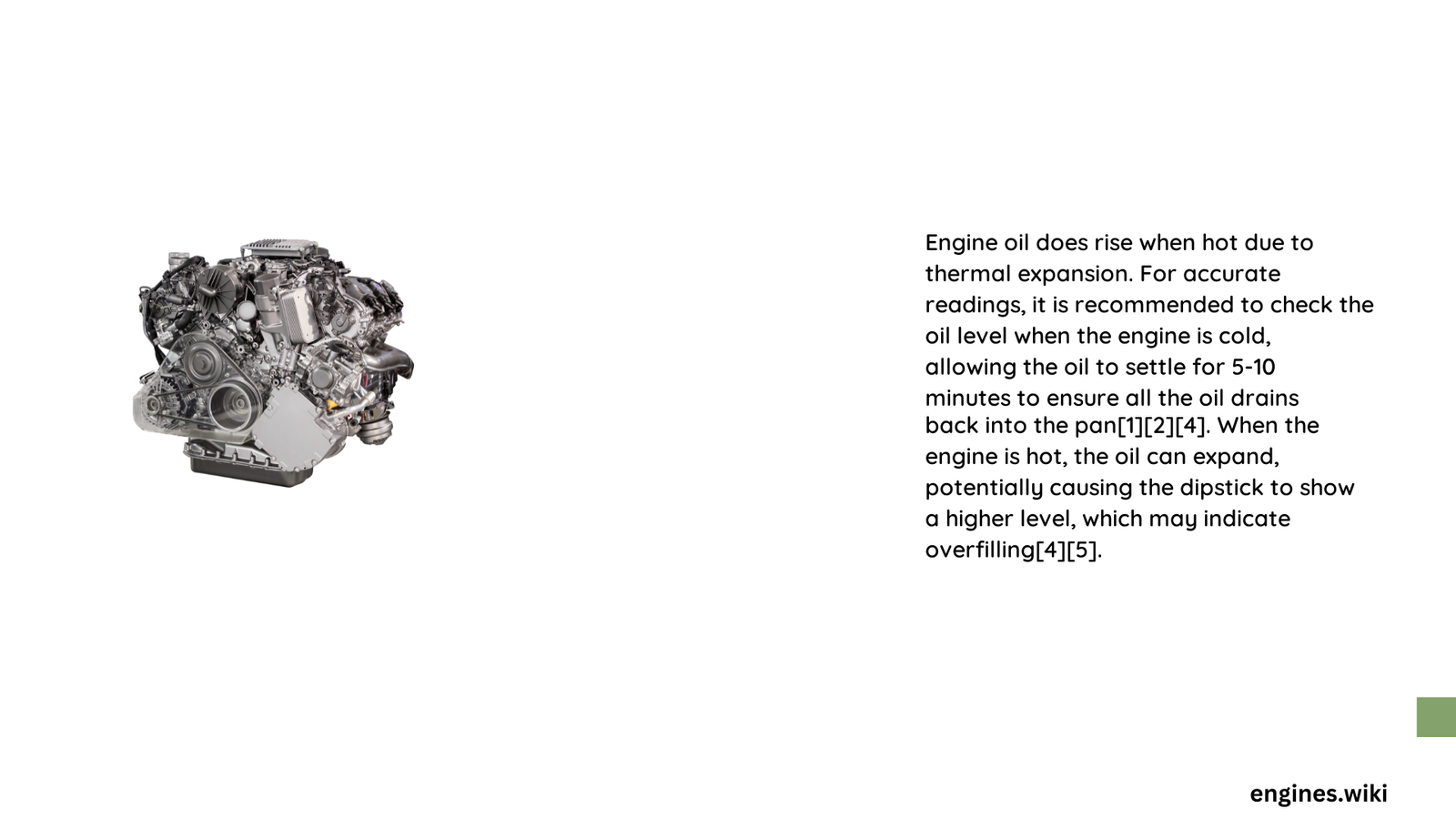Engine oil experiences a complex thermal expansion process when heated, causing subtle but significant volume changes that impact oil level measurements. Drivers often wonder about the precise relationship between temperature and oil volume, seeking clarity on how heat affects their engine’s lubrication system and what this means for routine maintenance and performance.
What Causes Engine Oil to Rise When Hot?
Engine oil rises when hot due to thermal expansion, a fundamental physical property where liquids increase in volume as temperature increases. This phenomenon is not just a simple linear expansion but a nuanced process influenced by multiple factors.
Key Factors Affecting Oil Volume Changes
| Factor | Impact on Oil Volume |
|---|---|
| Temperature Range | 4-6% expansion potential |
| Oil Viscosity | Decreases with heat |
| Engine Design | Influences expansion characteristics |
How Much Does Oil Actually Rise?
While precise measurements vary, engine oil typically experiences:
– Approximately 4-6% volume increase during normal operating temperatures
– Viscosity reduction from around 100 cSt at 40°C to 10 cSt at 100°C
– Noticeable but not dramatically significant level changes
Why Oil Level Appears Different at Various Temperatures

Viscosity Transformation
When an engine reaches operational temperature, several critical changes occur:
1. Oil molecules become more energetic
2. Intermolecular spaces expand
3. Overall liquid volume increases slightly
4. Dipstick readings can appear marginally higher
Accurate Measurement Techniques
To ensure precise oil level assessment:
– Check oil when engine is warm (not hot)
– Park vehicle on level ground
– Wait 5-10 minutes after driving for oil settlement
– Use clean dipstick
– Read at eye level for accuracy
Scientific Explanation of Thermal Expansion
Thermal expansion in engine oil follows fundamental thermodynamic principles:
– Molecular kinetic energy increases with temperature
– Increased molecular movement creates more space between molecules
– Result: Slight volume increase without changing oil mass
Practical Implications for Vehicle Owners
| Temperature Scenario | Oil Level Impact |
|---|---|
| Cold Engine | Lower apparent level |
| Warm Engine | Slightly elevated level |
| Extremely Hot | Maximum expansion |
Factors Influencing Oil Expansion
Critical variables affecting oil volume changes include:
– Oil composition
– Base stock quality
– Additive package
– Engine operating temperature
– Ambient environmental conditions
Synthetic vs. Conventional Oil Differences
Synthetic oils typically demonstrate:
– More consistent expansion characteristics
– Better thermal stability
– Less dramatic volume fluctuations
– Enhanced performance across temperature ranges
Professional Maintenance Recommendations
Experts suggest:
– Regular oil level checks
– Understanding normal expansion ranges
– Using high-quality oils
– Monitoring oil condition beyond just level
When to Be Concerned
Red flags indicating potential issues:
– Significant unexplained oil level changes
– Rapid oil level drops
– Consistent over/under-filling
– Unusual oil consistency
Technical Insights for Automotive Enthusiasts
Advanced understanding reveals that oil level changes are normal mechanical behaviors resulting from complex thermodynamic interactions between lubricants and engine components.
Precision Measurement Considerations
Professional mechanics utilize specialized tools and techniques to account for thermal expansion, ensuring precise diagnostics and maintenance protocols.
Pro Tip: Always consult your vehicle’s specific manual for manufacturer-recommended oil checking procedures.
Conclusion
Understanding how engine oil rises when hot involves appreciating the intricate relationship between temperature, molecular dynamics, and lubricant properties. Proper knowledge empowers vehicle owners to maintain optimal engine performance and longevity.
